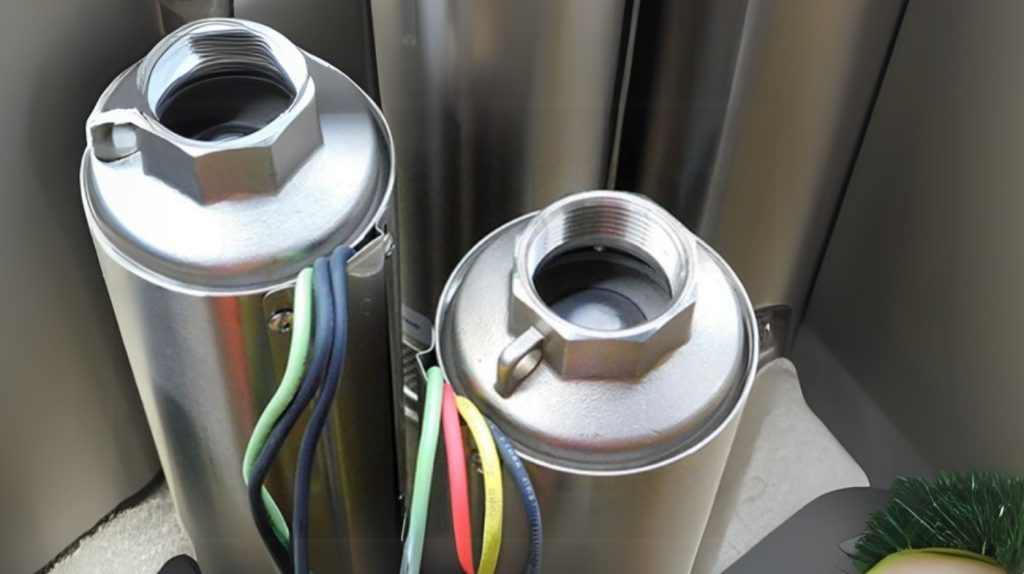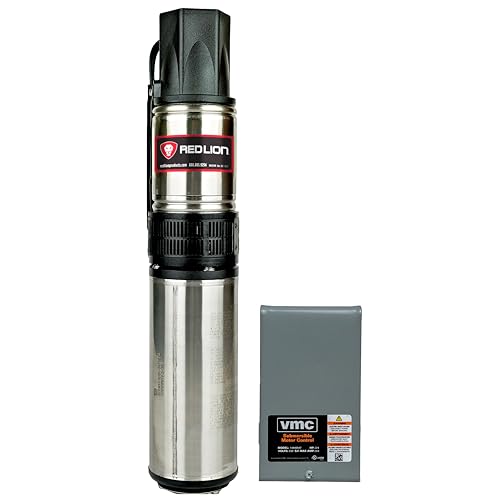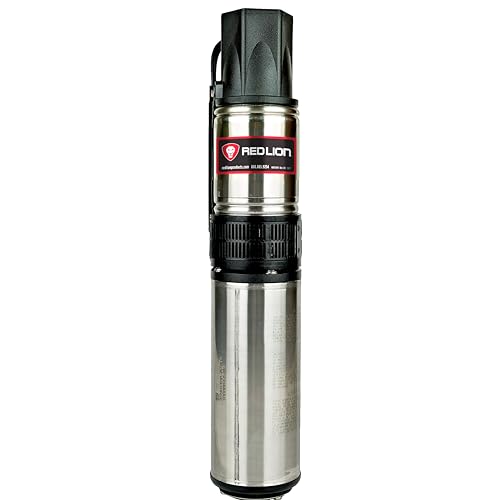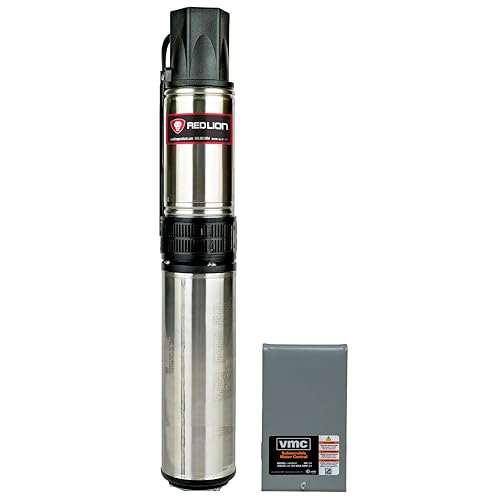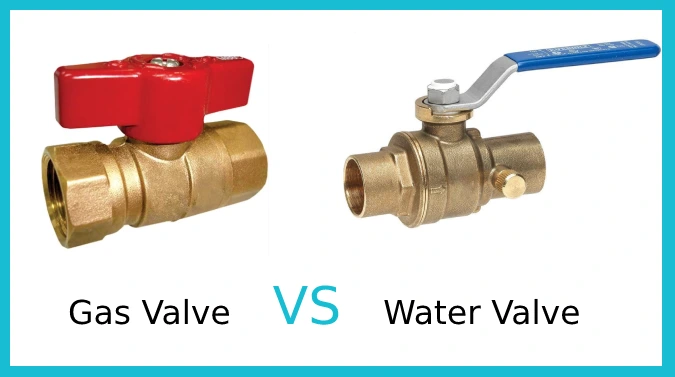Last Updated on May 21, 2025
You’ll choose a 2-wire well pump for simpler setups with motors up to 1.5 HP, as they have straightforward wiring and lower initial costs.
A 3-wire pump suits larger motors, offers enhanced control via an external control box, and allows easier maintenance without pulling the pump.
While 2-wire is reliable and cost-effective initially, 3-wire provides better long-term flexibility and performance, especially for deeper wells or bigger systems. Exploring the details reveals how each impacts installation, upkeep, and future upgrades.
- 4″ deep well submersible pump, 1HP, 230V, 33 GPM, 207 feet head, long life
- Solid stainless steel body with heavy duty thermal plastic discharge
- Industrial grade heavy duty, also good for home usage
- SUBMERSIBLE DEEP WELL PUMP: 3.9-inch diameter well pump fits 4-inch diameter driven wells or larger;…
- BUILT-INS: built-in check valve help keep pump from rapid cycling and extends the motor life;…
- RATED FOR 12 GPM: at 30 PSI it can deliver 12 GPM at a depth of 40-ft.; 212-ft. shut-off
Key Takeaways
- 2-wire pumps support motors up to 1.5 HP, while 3-wire pumps accommodate larger motors with an external control box.
- 3-wire systems allow easier maintenance since starting components are above ground, reducing repair costs and downtime.
- 2-wire pumps have simpler wiring and lower upfront costs but may incur higher long-term ownership expenses.
- 3-wire pumps provide better motor control, improved starting torque, and are ideal for deep wells and larger power needs.
- Proper installation and grounding are critical for both, but 3-wire setups offer more flexibility for future upgrades.
Power, Control, & Maintenance: Wiring Configurations and Electrical Differences
Although both 2-wire and 3-wire well pumps serve the same fundamental purpose, their wiring configurations differ considerably due to motor size and power demands.
You’ll find 2-wire pumps typically support motors up to 1.5 HP, using simpler wiring without an external control box. In contrast, 3-wire pumps accommodate larger motors and require a control box to manage higher power demands.
You must select wire gauge carefully based on motor rating and distance to the electrical service, ensuring compliance with local electrical codes. Proper grounding is crucial for both systems to protect against surges.
Additionally, 3-wire systems involve more complex wiring and allow enhanced motor control, while 2-wire setups rely on line voltage for startup. Understanding wiring diagrams is essential for accurate, safe installation.
The presence of a separate control box in 3-wire pumps also makes maintenance and repairs easier compared to 2-wire systems.
Installation Processes and Maintenance Requirements
When installing a well pump, you must carefully plan and assess factors like well depth and water quality to select the appropriate pump type and wiring configuration.
Understanding the differences in wiring configurations between 2-wire and 3-wire pumps is crucial for proper installation. Choose between 2-wire and 3-wire submersible pumps based on system compatibility and power needs.
Position the pump accurately within the well to maximize efficiency and longevity. Secure all electrical connections to meet local codes and conduct thorough testing during start-up to verify performance.
Select the right pump type, install precisely, and ensure secure wiring for optimal operation and safety. For maintenance, perform annual inspections of the pump, pressure tank, and wiring for wear or damage.
Regularly test water quality and replace components as needed to prevent failures. Regular maintenance is essential to extend the pump’s lifespan and reduce costly repairs.
Implement preventive measures, such as monitoring systems and dry run protection, to extend pump life and guarantee reliable operation over time.
Additionally, knowing that 2-wire pumps have internal starting components while 3-wire pumps use an external control box can help streamline maintenance procedures.
Cost Analysis: Upfront and Long-Term Expenses
Since selecting between 2-wire and 3-wire well pumps affects both upfront and long-term expenditures, understanding their cost implications is essential for making an informed decision.
Upfront, 3-wire pumps often cost more due to added components like control boxes and extra wiring, increasing material and installation labor expenses.
However, the 3-wire motor plus control box price can be comparable to a 2-wire motor alone. Materials such as copper wire and poly pipe are significant contributors to overall installation costs and should be considered when evaluating pump types.
Long-term, 3-wire systems reduce repair costs by allowing above-ground servicing of starting components, avoiding costly full pump replacements common with 2-wire pumps. Their modular design and longer lifespan offset initial costs, especially for pumps above 1.5 HP.
Conversely, 2-wire pumps feature simpler installation and lower initial expenses but risk higher total ownership costs due to frequent full pump replacements and limited repair options.
Performance and Application Suitability
Because three-wire well pumps support motors larger than 1.5 HP, they suit higher power applications better than two-wire pumps. You’ll find three-wire pumps ideal for deep wells requiring greater power and reliability, thanks to above-ground starting components that simplify maintenance.
Two-wire pumps, meanwhile, work well for smaller motors and offer simpler installation without a control box. However, two-wire pumps are generally considered more reliable and robust due to their simpler internal design.
| Feature | Two-Wire Pump |
|---|---|
| Motor Size | Up to 1.5 HP |
| Installation | Simpler, no control box |
| Maintenance Access | Limited, internal parts |
| Application Suitability | Smaller, shallow wells |
| Feature | Three-Wire Pump |
| Motor Size | Above 1.5 HP |
| Installation | More complex, control box |
| Maintenance Access | Easy, above-ground parts |
| Application Suitability | Larger, deep wells |
Upgrade Potential and Future-Proofing Options
Although three-wire well pumps may involve higher upfront costs and more complex installation, they offer significant advantages in upgrade potential and future-proofing.
Three-wire well pumps, despite higher initial costs, provide excellent upgrade potential and future-proofing benefits. You can replace starting components without pulling the pump, extending its lifespan and reducing maintenance costs.
The external control box enhances technical flexibility, allowing easy upgrades or modifications to adapt to future technologies. Components in control boxes include starting capacitors, running capacitors, relays, and thermal overloads, which can be serviced independently.
Their cable infrastructure supports scalability for higher horsepower motors or changes in well depth. You’ll also benefit from improved compatibility with generators, thanks to superior starting torque.
Maintenance becomes more efficient since components are accessible above ground, minimizing downtime and repair costs. While installation demands expertise, the long-term savings and operational sustainability make three-wire pumps a smart investment for future-proofing your well system.
Frequently Asked Questions
Can 2-Wire and 3-Wire Pumps Be Used Interchangeably in the Same Well?
You can’t simply swap a 2-wire pump for a 3-wire pump in the same well without adjustments. They require different wiring setups and components—2-wire pumps don’t need a control box, while 3-wire pumps do.
Also, power requirements differ; larger motors demand 3-wire configurations. If you want to switch, you’ll need to modify the wiring and possibly install a control box to guarantee proper and safe operation.
What Safety Precautions Are Unique to Wiring 2-Wire Versus 3-Wire Pumps?
When wiring 2-wire pumps, you’ll focus on simplified wiring and ensuring proper grounding of the motor and metal parts.
For 3-wire pumps, you must handle multi-conductor cables and install a control box, ensuring both the box and motor frame are grounded. Always protect components from moisture, following precise wiring codes for each setup.
How Does Water Quality Affect the Longevity of 2-Wire and 3-Wire Pumps?
Water quality directly impacts your pump’s lifespan by introducing sediment and corrosive elements. Sediment like sand abrades internal parts, causing premature failure, sometimes in under two years. Iron bacteria promote corrosion, degrading components regardless of pump type.
If your well has debris or worn screens, expect reduced longevity. Regular water testing and filtration help protect your pump from abrasive damage and corrosion, greatly extending its operational life.
Are There Differences in Noise Levels Between 2-Wire and 3-Wire Pumps?
You won’t notice inherent noise differences just because a pump uses two or three wires. Noise mainly depends on the pump type, mechanical components, and installation quality.
Both 2-wire and 3-wire pumps often use quiet centrifugal mechanisms. However, faulty wiring or poor mounting may introduce vibration noise.
Focus on proper installation, decoupling mounts, and quality components to reduce sound, regardless of wire count in your well pump system.
What Environmental Factors Influence the Choice Between 2-Wire and 3-Wire Pumps?
You might think installation space doesn’t matter much, but it does—tight areas favor simpler wiring to ease maintenance. You’ll also want to take into account humidity and corrosion, as they can degrade components faster.
If your power supply is inconsistent or experiences surges, you’ll need a setup with better starting torque. Finally, deeper wells requiring higher horsepower pumps often demand more complex wiring to guarantee reliable pressure and flow.
Wire Wisely: Make the Smart Choice for Your Well System
So, whether you’re wrestling with a 2-wire or 3-wire well pump, remember: fewer wires don’t always mean fewer headaches.
Sure, 2-wire setups might save you a buck or two upfront, but 3-wire systems flex better in performance and future upgrades kind of like choosing a Swiss Army knife over a butterknife.
In the end, pick your wiring like you pick your battles: smart, informed, and ready for whatever the well throws your way.
- SUBMERSIBLE DEEP WELL PUMP: 3.9-inch diameter well pump fits 4-inch diameter driven wells or larger;…
- BUILT-INS: built-in check valve help keep pump from rapid cycling and extends the motor life;…
- RATED FOR 12 GPM: at 30 PSI it can deliver 12 GPM at a depth of 40-ft.; 212-ft. shut-off
- SUBMERSIBLE DEEP WELL PUMP: 3.9-inch diameter well pump fits 4-inch diameter driven wells or larger;…
- BUILT-INS: built-in check valve help keep pump from rapid cycling and extends the motor life;…
- RATED FOR 22 GPM: at 30 PSI it can deliver 22 GPM at a depth of 80-ft.; 260-ft. shut-off
Last update on 2025-12-28 / Affiliate links / Images from Amazon Product Advertising API

